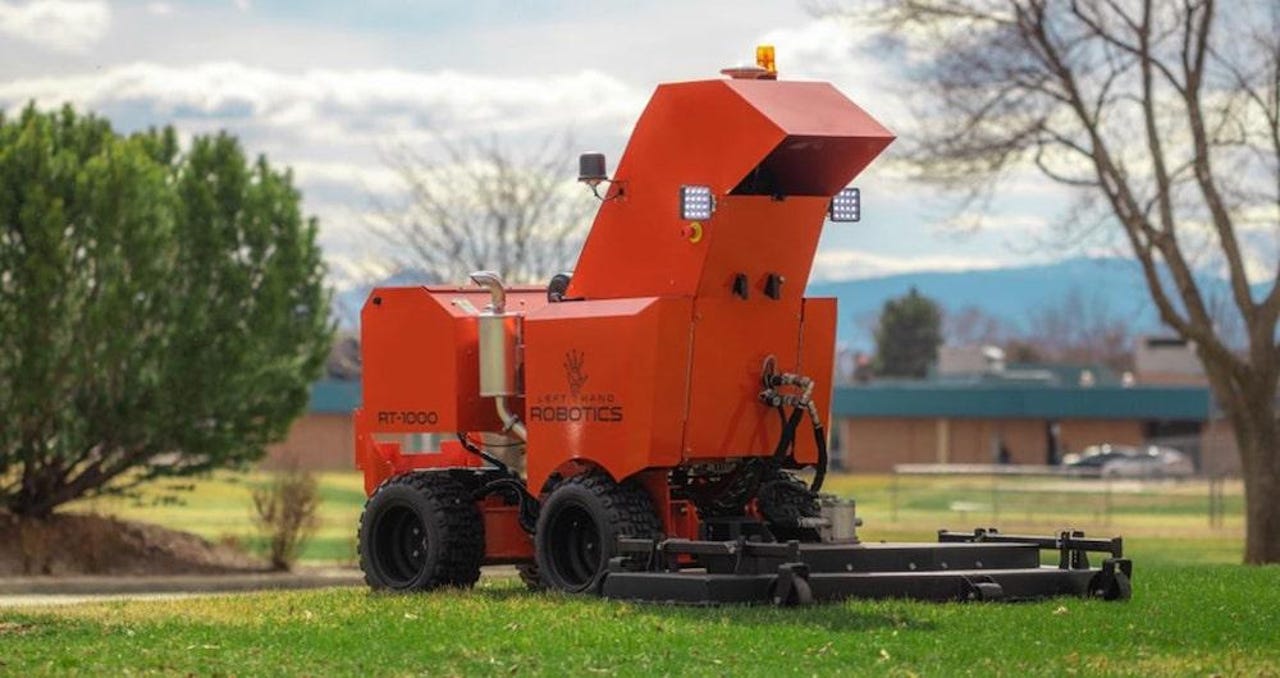Transforming robot will mow fields, shovel snow


In a world increasingly full of robots developed with dubious claims of solving actual problems, it's worth celebrating novel bots of a more quotidian nature. Recently, Left Hand Robotics, a company that makes an autonomous mobile robot for cutting grass on large fields, such as baseball diamonds, and that transforms into a snow clearing robot in winter, has raised $3.6 million.
"We looked at labor-intensive industries to see where robots could dramatically reduce the workload and where labor was scarce," says Left Hand Robotics CEO and Co-founder Terry Olkin. "The landscaping industry is second only to construction in terms of the high demand for workers that's unmet. Now workers can focus on complex tasks and offload the most repetitive, labor-intensive tasks to a robot. One of the most physically taxing chores is snow shoveling – a robot can clear snow much faster with no risk of worker injury."
The approach Olkin describes -- starting with a problem and a market and then developing a suitable technology solution -- may seem like business as usual, but at times it feels like the exception in a robotics sector rife with incredible technology that often has no hope of market adoption. It's telling that iRobot, the only consumer robotics company to gain real traction, has laser focused on the most run-of-the-mill problems imaginable: vacuuming, mopping, and lawn mowing.
Left Hand Robotics is targeting a different customer base, including municipalities and universities, but the thinking is the same: Take a core job that has to be done over and over and develop a robot to take the reins.
Left Hand's robot operates autonomously using GPS RTK technology to follow a pre-programmed path with accuracy down to the inch. Cloud-connected, the robot can be controlled and monitored in real time via an app. It uses radar and lidar technology to detect people and obstacles, as well as six onboard cameras to provide a real-time view and capture photos of work completed.
It's all technology we've seen before. The most novel thing may be that this sensing and autonomous driving suite has been applied to a problem for which there's already an active market.
"Michigan State University has had a mowing robot on campus this summer. We place it at its starting point and select that location's path program from the smartphone app, and then it takes off on its own. In the future, we can imagine multiple robots serving double duty for us by both mowing and clearing snow," says Jeremiah Saier, GIS Analyst at MSU.
The robot costs $55,000, far more than a standard riding mower. But mowing huge fields is a time-intensive job, and the ROI case becomes clear amortizing labor costs over a couple years. Left Hand is also able to tap into an existing distribution chain for lawn maintenance equipment.
"We have dealer relationships with MTE Turf Equipment Solutions and Lawn and Golf Supply Co., who are bringing our robot to the commercial outdoor equipment market. They already have customers clamoring for them."
The venture money comes on behalf of Mountain View-based firm Catapult Ventures, which recently announced a $55M fund with a focus on robotics and AI technologies. Catapult has already invested in self-driving trucks, autonomous drones, fruit picking robots, and now Left Hand Robotics' multi-purpose outdoor robot.
"We like to identify the biggest market opportunities and then figure out how to fill those gaps with a focused technology solution," says Rouz Jazayeri, Co-Founder and Managing Director at Catapult Ventures. "Left Hand Robotics is spot on with their focus."